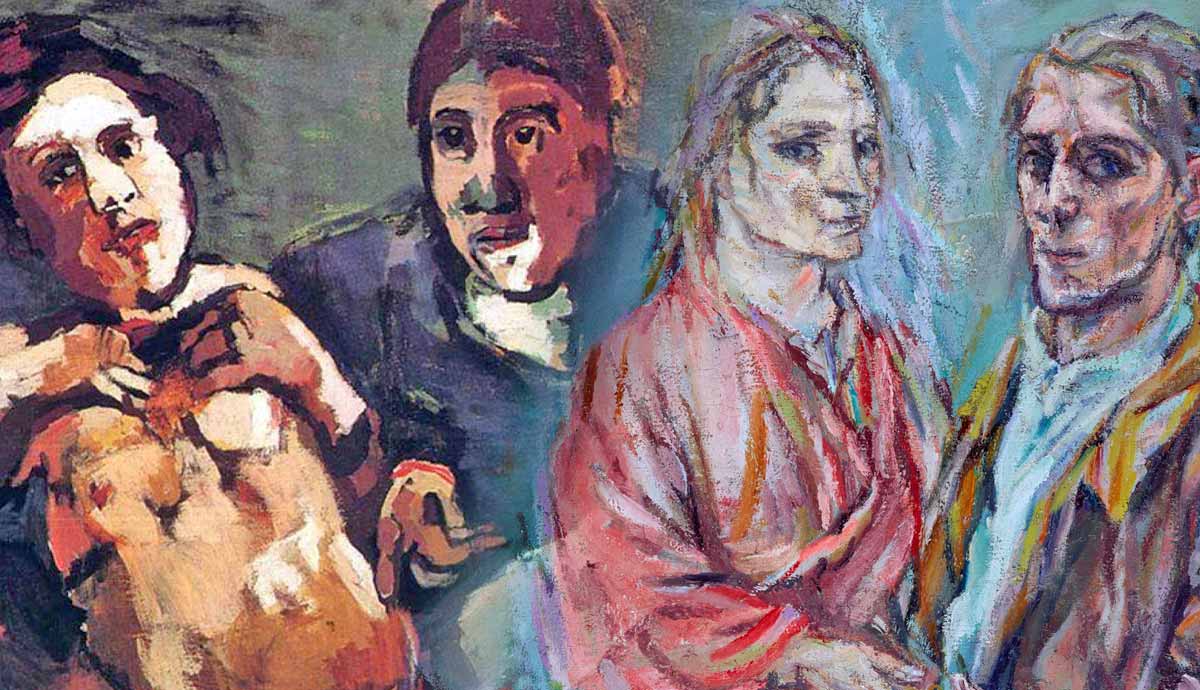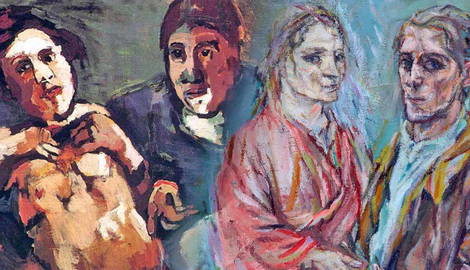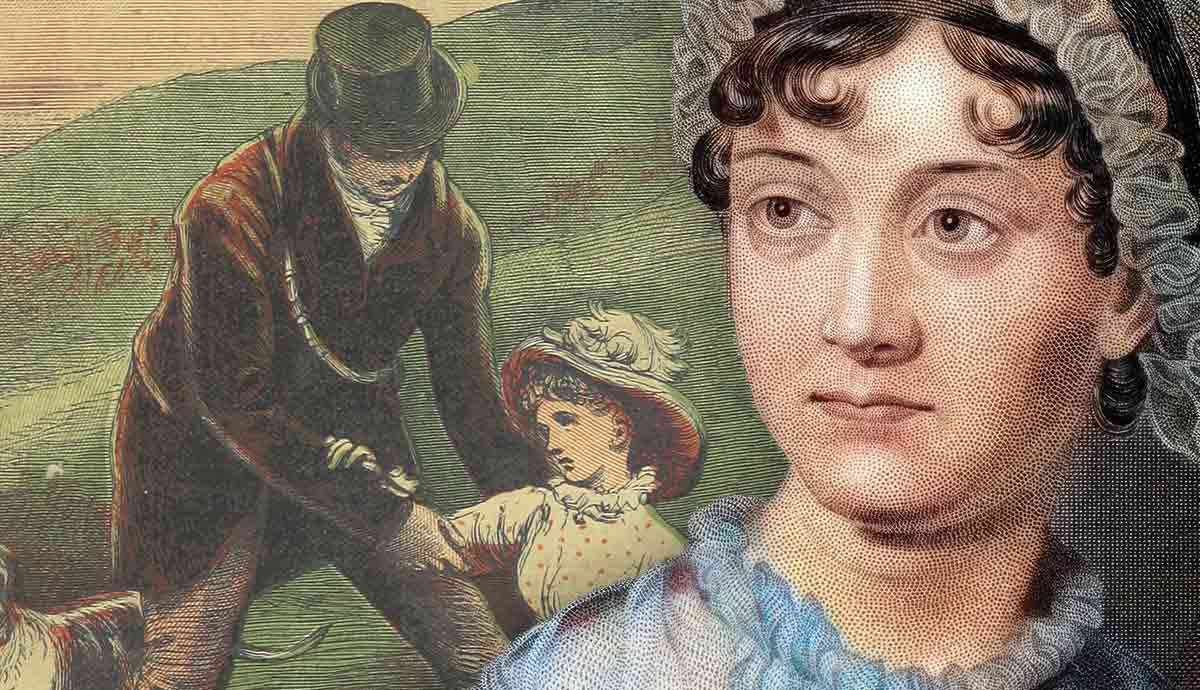
The Metropolitan Museum of Arts owns a black and white photograph of a female form, sitting across a bed, with white limbs pale against the thickly patterned blanket. The figure is a life-size doll, created to specifications set by the artist Oskar Kokoschka, a hallmark of Viennese avant-garde art. The doll portrays his former lover, Alma Mahler, who inspired around 450 drawings, sketches, and paintings during their relationship. Once she was no longer in his life, the doll replaced her as his subject, appearing in at least 33 artworks.
Who Was Oskar Kokoschka?

Oskar Kokoschka (1886-1980) was considered a “bad boy” of the European art scene, later becoming a leading figure in the European Expressionist movement alongside Gustav Klimt and Egon Schiele. He rose to public attention as a playwright and printmaker. However, his plays, paintings, and drawings gained notoriety, scandalizing his peers. He was also expelled from his studies at the prestigious Kunstgewerbeschule, the Academy of Arts and Crafts. Kokoschka received acclaim for his searing psychological portraits and landscapes, epitomized by bold, clashing colors, intensely exaggerated brushstrokes, thick layers of paint, and depths of emotional intensity.
Kokoschka was later labeled a degenerate artist by the Nazis. He fled to Prague in 1934. After living in Prague and London, he spent his final years in Switzerland.
Who Was Alma Mahler?

Alma Mahler was born in 1879. She grew up surrounded by artists, raised by her landscape-painter father and a mother who sang opera. She studied music from an early age and was intrigued by the ever-shifting world of the visual arts and fashion. She was charismatic and vivacious. As a teen, she became known for her looks. By the time she was 17, Alma was already considered the loveliest girl in Vienna.
Mahler was a composer and musician in her own right, though today we know her best for her relationships with famous men. At the age of 21, she married the famous composer and conductor Gustav Mahler and had four children with him. Gustav, older and more established in his career, forbade Alma from exploring her own interest in music and composing. He wrote to her: “The role of composer, the worker’s role, falls to me, yours is that of a loving companion and understanding partner. I’m asking a very great deal and I can and may do so because I know what I have to give and will give in exchange.” Their marriage was tumultuous. Alma had an affair with the architect Walter Gropius just before her husband died in 1911.
In her autobiography, Mahler wrote that she was attracted to genius. Mahler would go on to marry Walter Gropius, and then the writer Franz Werfel. Allegedly, she also had love affairs with other artists and musicians.
The Love Affair Between Alma Mahler and Oskar Kokoschka

In April 1912, Alma was playing piano at a party when a man younger than her, pulled her onto his lap with a violent hug. This was the artist Oskar Koksashka. He proposed to Alma later that same day.
The two were swept up in a passionate three-year affair that consumed them both. By all accounts, their relationship was tumultuous. Kokoschka was known to be temperamental, moody, jealous, and sometimes violent. Alma was also an incredible muse for the artist, who created approximately 400 paintings, drawings, and sketches based on her looks. One of his well-known paintings, The Bride of the Wind (Die Windbraut or the Tempest), features a self-portrait of the artist in an embrace with Alma.
Despite their strong feelings for each other, Alma had an abortion when she learned she was pregnant with Kokoshka’s baby. Devastated, the artist volunteered shortly thereafter to join the Austrian army’s effort in World War 1. Kokoshka returned home to learn that in his absence, Alma married the architect Walter Gropius.
The Commissioning and Creation of the Alma Mahler Doll

Devastated by the end of his affair with Alma, Kokoschkia commissioned the dollmaker Hermine Moos to make him a life-size doll of Alma. His letters are specific: “If you are able to carry out this task as I would wish, to deceive me with such magic that when I see it and touch it imagine that I have the woman of my dreams in front of me.” Kokoschka’s instructions and correspondence show how specific he was with his requests:
“Yesterday I sent a life-size drawing of my beloved and I ask you to copy this most carefully and to transform it into reality. Pay special attention to the dimensions of the head and neck, to the ribcage, the rump, and the limbs. And take to heart the contours of body, the line of the neck to the back, the curve of the belly. Please permit my sense of touch to take pleasure in those places where layers of fat or muscle suddenly give way to a sinewy covering of skin. For the first layer (inside) please use fine, curly horsehair; you must buy an old sofa or something similar; have the horsehair disinfected. Then, over that, a layer of pouches stuffed with down, cotton wool for the seat and breasts. The point of all this for me is an experience which I must be able to embrace!”
The Doll Arrives

The doll was completed and delivered in 1919, but once it arrived, Kokoschka was dismayed to find that the dollmaker had used swanskin for its covering, leaving the doll’s body covered in feathers. He mentioned that he wanted to dress it in fine clothing but couldn’t, saying that the effort to put clothes on the object was like trying to dress a polar bear rug: “The outer shell is a polar-bear pelt, suitable for a shaggy imitation bedside rug rather than the soft and pliable skin of a woman. […] The result is that I cannot even dress the doll, which you knew was my intention, let alone array her in delicate and precious robes. Even attempting to pull on one stocking would be like asking a French dancing-master to waltz with a polar bear.”
Nonetheless, he lived months of his life with the doll as his companion, taking it to parties and operas, painting and photographing it. Unable to possess the real Alma, he instead possessed this strange version of her. In photos, the doll is often naked with an arm covering her exposed breast. The doll’s face also seemed cartoonish and lifeless.
The Doll in Kokoschka’s Art

Kokoschka created 33 artworks depicting the doll, sometimes posing with it like in the 1922 painting Self Portrait with Doll. Other times the doll was shown alone, such as in the 1919 Woman in Blue. In both paintings, it can be hard to decipher whether the doll is a doll or a real, human being. The difference is really known because of the history of Kokoschka’s relationship with Alma.
Numerous photographs were taken of the doll, mostly by Hermine Moos in her studio. The photographs and paintings capture this singularly strange moment of Kokoschka’s life and legacy, raising questions about his desire to maintain a relationship or hold on to Alma even after the dissolution of their relationship and her marriage to another man. The destruction of the Alma doll is just another shocking aspect of its legacy. When Kokoschka was tired of his strange experiment, he threw a party, hired an orchestra, and drank champagne. Drunk, he decapitated the doll, leaving it to soak in wine in his yard. For all its feathers and oddities, the doll was lifelike enough that the next morning, police awoke Kokoschka, thinking that he had murdered a woman and left her on his front lawn.
The Legacy of Oskar Kokoschka’s Alma Doll

Even during Oskar Kokoshka’s lifetime, the doll raised some eyebrows. As his career progressed and he became a part of the art historical canon, the Alma doll was considered one of his many eccentricities, or a visual aspect of his mental illness. However, in the wake of greater awareness of power dynamics and gender inequality in popular culture, critics are rebranding the Alma Doll, not just as an artist mannequin, but as a disturbing way that Kokoschka tried to retain control over Alma even after their relationship ended.








